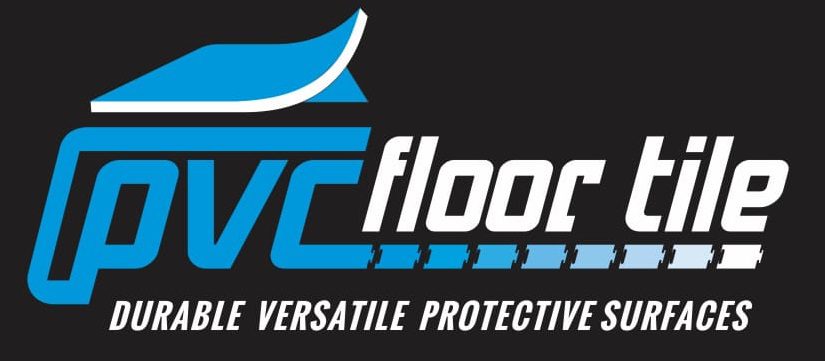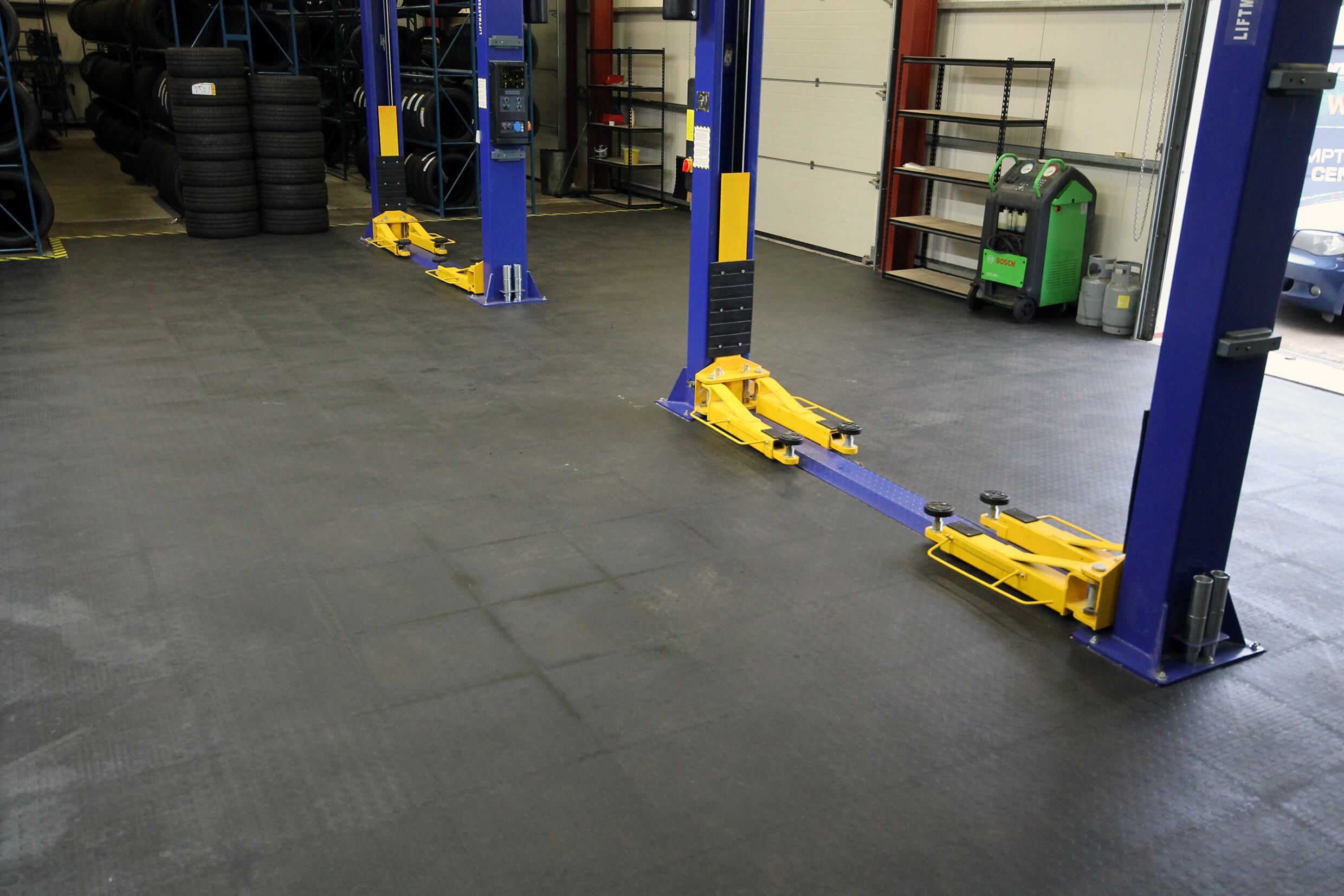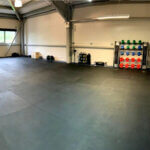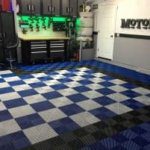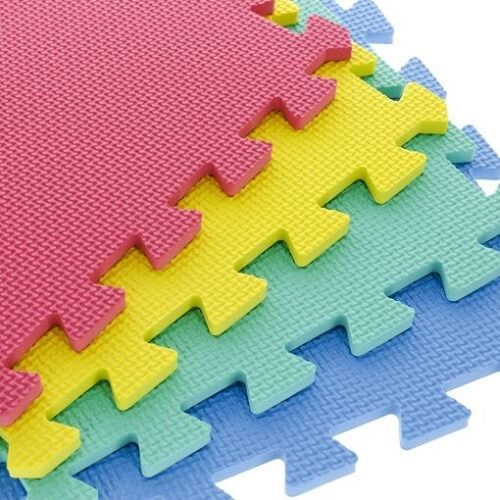Just like any flooring selection is it PVC, ceramic, carpeted or cement rubber has pros and cons. It is ideal for areas where there is high traffic, has good noise and sound reduction ability, and low maintenance costs, but it is expensive to buy.
We will look in detail at these and other pros and cons of rubber floors, which will guide you when considering rubber flooring.
The Pros of Rubber Flooring
Rubber floors have a lot of benefits, listed below are some of them:
Durability and Resilient
All types of rubber are it the tiles or sheets, rubber flooring is the best and next to none in areas with high traffic not just from foot traffic, but also from heavy equipment, vehicles, trollies amongst other things. Rubber is resistant to other different factors like weather, temperatures, and chemicals. It does not fade, torn quickly neither does it corrode.
Comfort:
Another important value of rubber is comfortable underfoot. Walk or stand for a long time on other hard floorings and you will appreciate rubber flooring.
The feel of rubber flooring is so comfortable under the foot, and it’s slip-resistant. It is the best option when it is a public area.
Sound Absorption:
Because rubber is a quitter than other hard surface floorings. The sound absorption of rubber has tremendous benefits to areas like theatres, libraries, and other large open areas.
Low Maintenance and Easy to clean:
Rubber does not need special maintenance, no waxes or any special chemical to have it continue looking good, rubber has the ability not hold dirt on it, if it is dirty you just need to either sweep or just wipe it with a wet cloth or mop. Usually, just a mop and a detergent is all you need to maintain it and keep it clean.
Flexibility:
Rubber can be used on various surfaces be it in the kitchen, bathrooms, stairways, wall base, garages, and gyms amongst other areas. It comes in different forms either as sheets or tiles and mats. So many different colors and designs are found to suit any individual needs.
The Cons of Rubber Flooring
As much as there are various cons related to rubber flooring. Here we look at the main weaknesses. The chief amongst them is the initial cost of acquiring it, though maintaining it is lesser which will become cost-effective over a period of time.
Expensive
Getting rubber flooring is expensive as compared to other options of flooring, maybe it is because of how it is manufactured, the durability and resilience, and also its flexibilities. Though maintaining it will be at a lower cost.
Unpleasant Scent
Some people do not like the look of rubber floors, while it is stylish, to some it clashes with traditionalist design ethic.
Rubber sometimes release an unpleasant scent especially when it is new and when there are high temperatures that some people are not comfortable with unlike other hard surface flooring option. Some rubber materials tend to harden and become cold when there are cold temperatures.
Nevertheless, rubber flooring has proven to be the best option of flooring, for it does not crack it absorbs impact, is waterproof, and is comfortable on the feet.
It can be found marbled, perforated, in various colors and textures, and even plain, which makes it easier to work with and to design your space more easily. You can use rubber flooring both indoors and outdoors, on dry areas, and on areas prone to liquid spillages.
For further advice on the pros and cons of rubber flooring and also a vast range of rubber products, for your garage, gym, home, office and other areas do get in touch with us.
Installation Tips for Rubber Flooring
1. Getting a Perfect Fit with Dry Fitting
Thinking about installing rubber flooring? Great choice! Before you start, there’s a little trick called dry fitting that can make a big difference. Just lay out your rubber tiles or sheets right on the floor, no adhesive yet. This lets you see how they all fit together and make any necessary adjustments. It’s a bit like puzzle-solving—ensuring everything looks flawless before making it permanent. Since rubber is a natural material, each piece might be slightly unique, so this step is key to a neat and professional look.
2. Dealing with Moisture Like a Pro
Rubber floors are surprisingly good friends with moisture-prone areas—yes, really! While there’s a bit of a myth out there that they can’t handle damp spaces, the truth is, they can—with the right approach. The secret? Use the correct adhesive designed for moist conditions. Also, preparing your subfloor properly is crucial. It’s not just about laying the flooring; it’s about laying the groundwork for success. If you’re not sure how to handle this, a skilled installer who knows their way around rubber flooring and the right adhesives can be worth their weight in gold.
Choosing Between Rubber Sheets and Tiles
1. Rubber Sheets for Healthcare Settings
If you’re outfitting a healthcare environment, rubber sheets might be your best bet. Why? Because they can be installed with fewer seams, which means there are fewer places for dirt and germs to hide. It’s all about keeping things clean and hygienic, which is super important in healthcare settings. Plus, fewer seams make maintenance a breeze.
2. Rubber Tiles for Educational Spaces
Now, if you’re looking to spruce up an educational space, rubber tiles might be the way to go. They’re a hit in schools because you can play around with colors and patterns—perfect for creating fun or sophisticated designs. Whether it’s a lively classroom or a serene study area, rubber tiles offer the flexibility to match your vision.
Getting Custom Advice from a PVC Floor Tile Representative
Need specific advice for your flooring project?
Don’t hesitate to reach out directly to a PVC Floor Tile Representative. Whether you have burning questions or need advice tailored to your unique project, they’re there to help. A direct conversation allows you to dive deep into your project’s needs and come up with solutions that are just right for your space. So, pick up the phone or shoot them an email—it’s your first step towards a flooring solution that’s as unique as your project!
